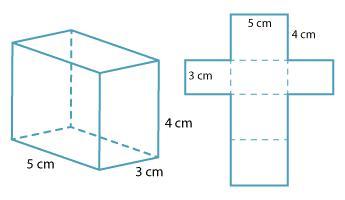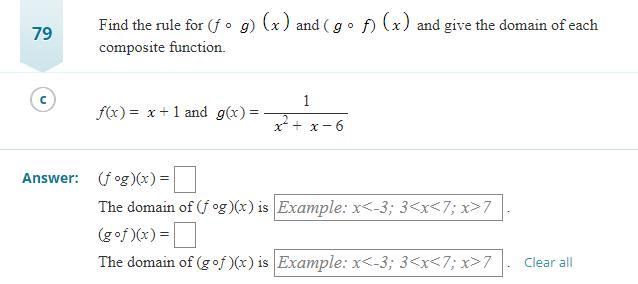The rate at which Pete’s Bakery can make pies is shown in the graph.
Question 1
Part A
How many pies can Pete’s Bakery make in 7 hours?

Answers
Related Questions
PLS HELP!!!!!
Brayden conducted a scientific experiment. For a certain time, the temperature of a compound rose 2 2/5 degrees in 1/5 of an hour. How much did the temperature of the compound rise in one hour?

Answers
Answer: 12 degrees or 11 5/5 or 60/5
Step-by-step explanation:
Since the temperature is rising 2 2/5 per 1/5 of an hour we just need to multiply 2 2/5 times 5 because 5/5 would equal the whole hour. In order to multiply easier you can change 2 2/5 to an improper fraction by multiplying the whole number with the denominator and then adding the numerator. Which you should get 12/5 next change 5 to a fraction which would be 5/1. 5 times 12 is 60 and 5 times 1 is 5. You get 60/5 which if divided is 12.
For the number line you just have to find 1/5 and 2 2/5 on it and mark it.
whats the answer i ran out of videos
Answers
Answer:
Please give the question in your ask
Step-by-step explanation:
we can't help you without knowing what the question is
Answer:
answer to what
Step-by-step explanation:
Set up and solve a system of equations to solve the problem.
A jar contains n nickels and d dimes. There are 20 coins in the jar, and the total value of the coins is $1.50. How many nickels and how many dimes are in the jar?
The jar contains ___ nickels and ___ dimes.
Answers
Answer:
The jar contains 10 nickels and 10 dimes. Another answer is that the jar contains 4 nickels and 13 dimes.
Step-by-step explanation:
1 nickels = 5 cents
1 dime = 10 cents
1st answer
10 nickels = $0.50
10 dimes = $1.00
So 10 nickels + 10 dimes = $1.50
2nd answer
13 dimes = $1.30
4 nickels = $0.20
So 13 dimes + 4 nickels = $1.50
Just uhh… it’s a lot, I’ll try to do this by myself.

Answers
Answer:
\(\textsf{(a)} \quad -2x-4\)
\(\textsf{(b)} \quad 2x+5\)
(c) Not equivalent.
\(\textsf{(d)} \quad 3x^2-24x+48\)
\(\textsf{(e)} \quad 9x^2-72x+144\)
(f) Not equivalent.
Step-by-step explanation:
Equivalent expressions are expressions that simplify to the same expression.
Part (a)
\(\begin{aligned}&\textsf{Add 3 to $x$}: & \quad x+3\\&\textsf{Subtract the result from $1$}: & \quad 1-(x+3)\\&\textsf{Double}: & \quad 2[1-(x+3)]\\&\textsf{Expand}: & \quad 2[1-x-3]\\&\textsf{Simplify}:&2[-x-2]\\&& -2x-4\end{aligned}\)
Part (b)
\(\begin{aligned}&\textsf{Add 3 to $x$}: & \quad x+3\\&\textsf{Double}: & \quad 2(x+3)\\&\textsf{Subtract $1$ from the result}: & \quad 2(x+3)-1\\&\textsf{Expand}: & 2x+6-1\\&\textsf{Simplify}:&2x+5\end{aligned}\)
Part (c)
The expressions are not equivalent.
The coefficients of the x-variables are the negatives of one another, and the constants are different numbers.
Part (d)
\(\begin{aligned}&\textsf{Subtract 4 from $x$}: & \quad x-4\\&\textsf{Square the result}: & \quad (x-4)^2\\&\textsf{Triple}: & \quad 3(x-4)^2\\&\textsf{Expand}: & \quad 3(x^2-8x+16)\\&\textsf{Simplify}:& 3x^2-24x+48\end{aligned}\)
Part (e)
\(\begin{aligned}&\textsf{Subtract 4 from $x$}: & \quad x-4\\&\textsf{Triple the result}: & \quad 3(x-4)\\&\textsf{Square}: & \quad [3(x-4)]^2\\&\textsf{Expand}: & \quad [3x-12]^2\\&\textsf{Simplify}:& 9x^2-72x+144\end{aligned}\)
Part (f)
The expressions are not equivalent.
The coefficients the second equation are three times the coefficients of the first equation.
"You have a stack of 10 boxes that is 8 3/4 feet tall. What's the height of each box?"
Answers
Answer:
0.875. is the correct answer hopefully
Explanation:
8 3/4 is the total height and there are 10 boxes. So, we need to divide 8 3/4 by 10 which is 0.875 or 7/8.
Find the area of the following figure. get brainliest if correct<3
312 cm2
252 cm2
300 cm2
400 cm2

Answers
Answer:
312
Step-by-step explanation:
because when you add the triangles and rectangles together you get 312
60x 2 = 120
120+(16 x12)
120+ 192= 312cm^2
PLEASE ANSWER QUICKLY PLEASEPLEASEPLEASE

Answers
Answer: linear
Step-by-step explanation:
helppp please and ty

Answers
Answer:
The pattern rule is adding 30 each time. From top to bottom, the answers are: 91, 123 and 313
Step-by-step explanation:
If you minus 30 from 60, you get 30. Also, just to check this, if you minus 208 from 238, you also get 30.
Hope this helps!
i need this fast help I will give brainlish and 50 points

Answers
Answer: 1.71
Step-by-step explanation:
I need help pls I've been stuck on this problem


Answers
Answer : 1188
help for brainliest please

Answers
Number Six’s answer is X=3 and Number Seven’s answer is Y=3
The second one is y=3
Solve the inequality.
10−12x<−18
Which inequality represents the solution to this inequality?
PLEASE HELP!!!
Responses
x>−56
x>−56
x<56
x<56
x>56
x>56
x<−56
x<−56
Answers
Answer: x> 2.33
None of the answer choices listed are correct.
Step-by-step explanation:
The inequality can be solved by adding 12x to both sides and then subtracting 10 from both sides:
10 - 12x + 12x < -18 + 12x
10 < -18 + 12x
Now we subtract -18 from both sides:
10 - (-18) < -18 + 12x - (-18)
28 < 12x
Finally, we divide both sides by 12:
28/12 < 12x/12
2.33 < x
So, the solution to the inequality 10 - 12x < -18 is x > 2.33.
Are the expressions equivalent 7y + 21 and 3(2y+7)+y
Answers
Answer:
Yes
Step-by-step explanation:
3(2y + 7) + y
6y + 21 + y
7y + 21
Diana is painting statues. She has 7/8 of a liter of paint remaining each statue requires 1/20 of a liter of paint how many statues can she paint
Answers
Answer:
The number of statues = 7/8 × 16 = 14.
From a log of wood of length (8x+12) m, a piece of length (4x+3) m was cut. Find the length of the remaining log of wood.
Grade#7
Answers
Answer: 4x+9
Step-by-step explanation: (8x+12)- (4x+3)
Answer: (4x+9)
Step-by-step explanation:
Log of wood = (8x+12)
piece length = (4x+3)
So, (8x+12) - (4x+3)
=> (8x+12) - 4x - 3
=> 8x-4x +12 -3
=> 4x + 9
So, the length of the remaining piece of wood = (4x+9)
hope it helps
the volume of the right circular cylinder in 144π cubic yards. if h, the height of the cylinder is 4 yards, what is r, the radius of the base?

Answers
If the volume of the cylinder is 144π cubic yards and the height of the cylinder is 4 yards, you can set up the equation:
144π = πr^2 * 4
You can then solve for r by dividing both sides of the equation by 4π:
r^2 = 36
r = 6
Thus, the radius of the base of the cylinder is 6 yards.
Answer:
r = 6
Step-by-step explanation:
The formula for the volume of a cylinder is V = πr^2h,
If the volume of the cylinder is 144π cubic yards and the height of the cylinder is 4 yards it can be written as 144π = πr^2 * 4
You can then solve for r by dividing both sides of the equation by 4π:
r^2 = 36
r = 6
\(3^{3}\) + 5 x 3
Answers
5x3=15
27+15= 32
Hope it helps :) have a great day
because 3x3x3 = 27
and And 5x3= 15 so 27+15=42
Jenny has pennies, nickels, dimes, quarters, half-dollars, and/or dollar coins in her purse. Still, she's unable to make change for an old $2 bill. What is the greatest amount of money that she could possibly have? (She may have none of the same coins.)
Answers
Answer:
The Only Possible Max amount is $1.99
Step-by-step explanation:
If she has change and doesnt have enough for a two dollar bill then we use common sense,
$1 = 100 cents
$2 = 200 cents but she cant get 2 dollars so we subtract 1 cent from 200 cents and end up with 199 cents which is 1 dollar 99 cents
How many 14s make 3?
Answers
Answer:
12 1/4's make 3.
12 × 1/4 = 3
Step-by-step explanation:
Dividing by a fraction is the same thing as multiplying by its reciprocal.
Skip the first number, Flip the fraction, and Multiply them.
\(3 \div \dfrac{1}{4}\)
\(= 3 \times \dfrac{4}{1}\)
\(= 3 \times 4\)
\(= 12\)
hope this helps you out
To represent the number of squares after steps, Diego and Jada wrote different equations. Diego wrote the equation f(n)= (n+1) 2 . Jada wrote the equation f(n) = n 2+ 2n + 1. Are either Diego or Jada correct? Explain your reasoning.
Answers
I hope this is right
Answer:
nether of them are corrcet
Step-by-step explanation:
the steps are added by length and hight
Please help me due tomorrow

Answers
Answer: Surface Area = 2 x (5x2 + 3x2 + 5x3) = 62 centimeters
Surface area of a right rectangular prism = 2(lh + wh + lw)
Step 1: Label the Given-
Length (l) = 5cm, Width (w) = 3cm, Height (h) = 2cm
Step 2: Replace the given-
Surface Area = 2 x (5x2 + 3x2 + 5x3)
= 2 x (31)
Surface Area = 62 centimeters
Horus got his answer, by applying only what lays inside the parentheses. To get the right answer, Horus must multiply what they got by 2:
2 x (31) = 62 centimeters

Answer:
SA= 15+6+10+10+15+6 = 62
Step-by-step explanation:
take your top rectangle multiply length and width= 15
Take the one right below it take the 2cm, and multiply it with 3=6
after that one doe 3x5 again=15
Then, 3x2=6
And then 5x2=10
And then once more=10
HELPPP!!!
Area of Composed Figures.

Answers
Answer:
3
Step-by-step explanation:
Before you multiply or divide a fraction by a mixed number, you have to make sure they are both in the same___________?
Answers
Answer:
Step-by-step explanation:
form. Meaning you need make both fractions improper
100%100, percent is shown on the following tape diagram.
What percent is represented by the entire tape diagram?
Answers
Answer: what diagram?
Step-by-step explanation:
Answer:
Step-by-step explanation:
45% because I said so
PLEASE HELP ME I SUCK AT VOLUME NO CAP

Answers
Answer:
Step-by-step explanation: You can split the shape into 2 shapes.
The volume of one shape is 126
The volume of the other is 150
You have to add them together and you get 276 cubic inches
What is the number, in cubic inches of the original box?

Answers
The volume of the original box is given as
V = lwh
V = 10(6)(3)
V = 180 in³
A plumber charges $25 for a service call plus $50 per hour of service. Write an equation in slope-intercept form (y = mx + b) for the cost, C, after h hours of service.
Answers
Answer:
C = 50H + 25
Step-by-step explanation:
The starting fee is $25, which means that you must add $25 no matter what.
The plumber is charging $50 dollars per hour, so it should be 50H
please help me!
Solve the system of linear equations by substitution
y = 3x - 3
Answers
It’s “y=6”
:)
Which function below has an asymptote at y = a?

Answers
This is because b^x usually has an asymptote at y=0 but by adding a the asymptote is shifted up a units
I need help on these 5 questions:





Answers
Step-by-step explanation:
(2x-3)² - (4x+1)(x − 4)
4x² - 12x + 9 - 4x² - 16x + x - 4
group like terms
4x² - 4x² - 12x+x+9-4
-11x + 5